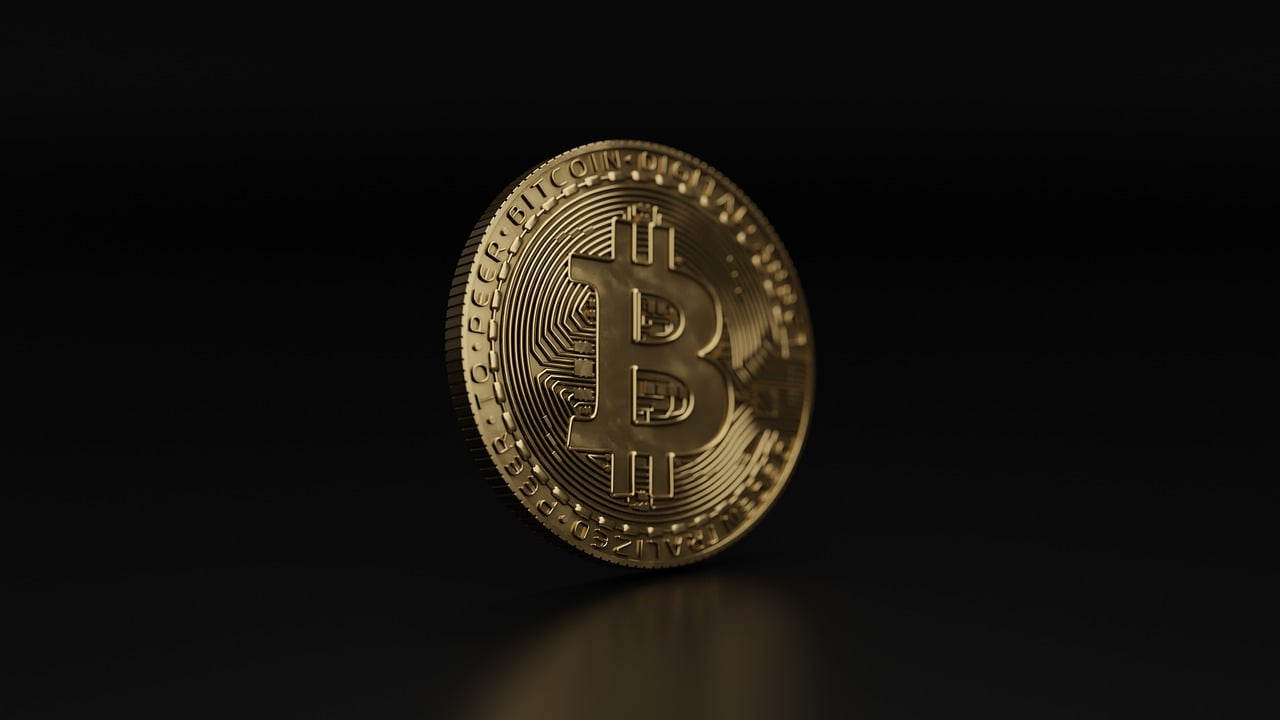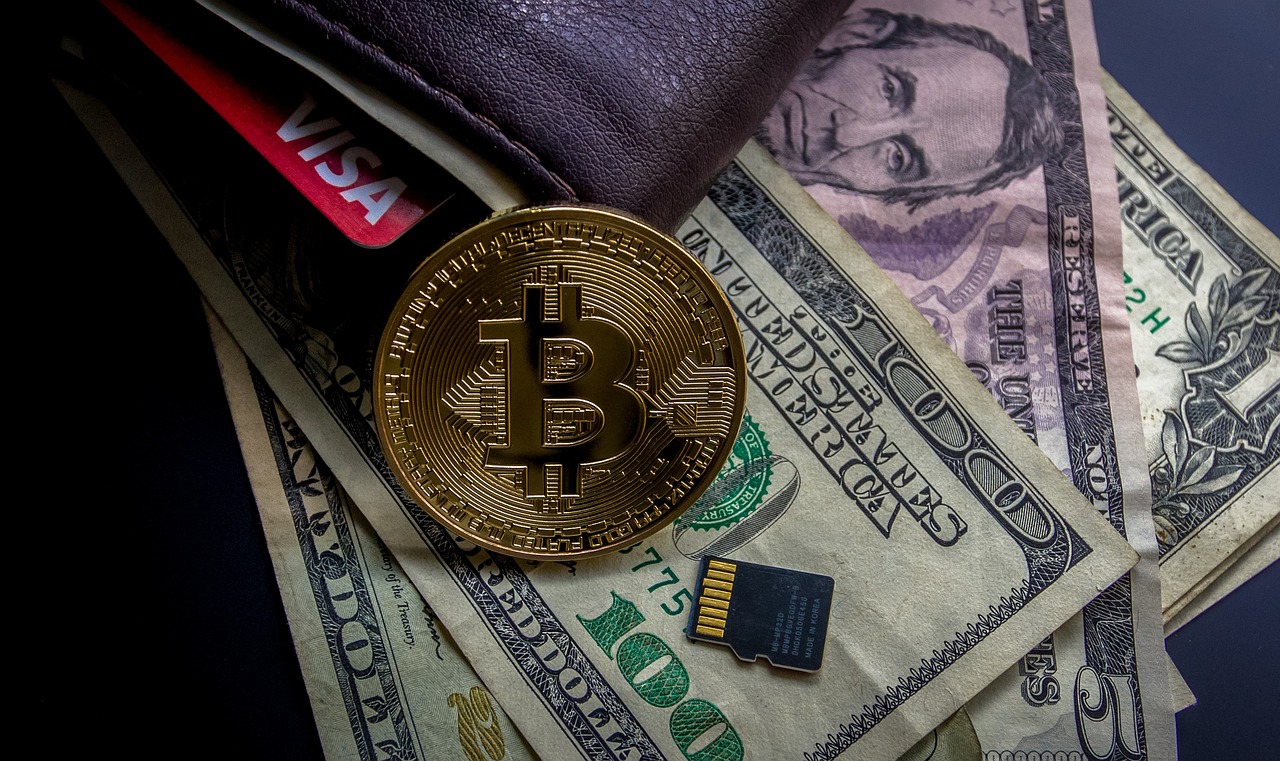The Role of Stablecoins in Financial Stability
In an age where digital currencies are gaining traction, stablecoins have emerged as a pivotal component in the quest for financial stability. But what exactly are stablecoins? These are cryptocurrencies specifically designed to maintain a stable value, often pegged to traditional assets like fiat currencies or commodities. As our financial systems evolve, the introduction of stablecoins offers a fresh perspective on how we can achieve and maintain stability in a world that often feels anything but stable.
Imagine for a moment a world where your money does not fluctuate wildly in value overnight. This is where stablecoins come into play, acting as a bridge between the traditional financial system and the burgeoning world of cryptocurrencies. They provide a semblance of certainty in an otherwise unpredictable environment, making them a valuable tool for both everyday users and institutional investors alike.
Stablecoins contribute to financial stability in several crucial ways. First, they can help reduce volatility in the cryptocurrency market. By providing a stable alternative, they encourage more participants to engage in the digital economy without the fear of losing their investments to market swings. This increased participation can lead to greater liquidity and more robust market dynamics.
Moreover, stablecoins facilitate faster and cheaper transactions compared to traditional financial systems. The ability to transfer value across borders in a matter of seconds, without the high fees typical of conventional banking systems, is a game changer. This efficiency not only benefits individuals but also enhances the overall functionality of financial markets.
However, the road to widespread adoption of stablecoins is not without its challenges. Regulatory scrutiny is increasing as governments seek to understand the implications of these digital assets. Questions around their transparency and the mechanisms that underpin their value are at the forefront of discussions among policymakers. Addressing these concerns is vital for the future of stablecoins and their role in promoting financial stability.
In summary, stablecoins hold the potential to reshape our financial landscape by providing a stable, efficient means of transaction. As we navigate through the complexities of an increasingly digital economy, understanding the role of stablecoins in enhancing financial stability becomes not just important, but essential.
- What are stablecoins? Stablecoins are cryptocurrencies designed to maintain a stable value by pegging them to traditional assets.
- How do stablecoins contribute to financial stability? They help reduce volatility, enhance liquidity, and facilitate faster transactions.
- What challenges do stablecoins face? Regulatory scrutiny and transparency issues are significant challenges for stablecoins.
- Can stablecoins replace traditional currencies? While they offer many advantages, their acceptance and regulation will determine their future role.

Understanding Stablecoins
Stablecoins are a fascinating innovation in the world of cryptocurrency, designed specifically to avoid the notorious volatility that often plagues digital currencies like Bitcoin and Ethereum. Imagine trying to buy a cup of coffee with a currency that can swing wildly in value from one day to the next. It’s not just inconvenient; it’s downright impractical. This is where stablecoins come into play. By pegging their value to traditional assets, such as fiat currencies or commodities, stablecoins aim to provide a more stable and reliable medium of exchange.
There are several types of stablecoins, each with unique mechanisms that help maintain their stability. The three primary categories are:
- Fiat-Collateralized Stablecoins: These are backed by reserves of a fiat currency, such as the US dollar. For every stablecoin issued, an equivalent amount of fiat is held in reserve, ensuring that the value remains stable. Examples include Tether (USDT) and USD Coin (USDC).
- Crypto-Collateralized Stablecoins: Instead of fiat, these stablecoins are backed by other cryptocurrencies. To account for the volatility of the underlying assets, these stablecoins are over-collateralized, meaning that more cryptocurrency is held in reserve than the value of the stablecoins issued. An example is DAI.
- Algorithmic Stablecoins: These do not rely on collateral but instead use algorithms to control the supply of the stablecoin. When the price rises above a certain threshold, the algorithm increases supply to bring the price down, and vice versa. An example is Ampleforth (AMPL).
The underlying mechanisms of stablecoins are crucial for their functionality. They provide a bridge between the traditional financial system and the world of cryptocurrencies, making them attractive for users seeking both stability and the benefits of digital assets. Moreover, stablecoins can facilitate transactions in a decentralized economy, allowing users to transact without the need for intermediaries.
In addition to their types and mechanisms, stablecoins hold significant potential in various applications. They can be used for remittances, as they offer lower fees and faster transaction times compared to traditional banking systems. Furthermore, stablecoins are increasingly being adopted in decentralized finance (DeFi) platforms, where they serve as a stable medium for lending, borrowing, and trading.
As we delve deeper into the role of stablecoins in financial stability, it’s essential to understand not only their mechanics but also their implications for the broader financial ecosystem. They represent a shift towards a more digital and interconnected economy, where traditional financial principles can coexist with innovative technologies.

The Importance of Financial Stability
Financial stability is not just a buzzword; it’s the bedrock upon which economic growth and resilience are built. Imagine a world where businesses can thrive without the constant fear of market crashes or currency devaluation. This is the essence of financial stability. It creates an environment where investments can flourish, consumer confidence can soar, and economies can expand without the looming shadow of uncertainty. In essence, financial stability is like a safety net that protects both individuals and businesses from the unpredictable swings of the financial markets.
When we talk about financial stability, we’re referring to a system that can absorb shocks and maintain its essential functions. It’s crucial for several reasons:
- Investment Confidence: Investors are more likely to commit their resources when they feel assured that their investments won’t be wiped out overnight due to market volatility.
- Consumer Spending: When consumers feel secure, they’re more inclined to spend money, which in turn drives economic growth.
- Access to Credit: A stable financial system can ensure that credit remains available, allowing businesses to expand and consumers to make significant purchases.
The impacts of financial stability ripple through the economy. For instance, when financial institutions are stable, they can lend more freely, which stimulates business growth and job creation. Conversely, instability can lead to a credit crunch, where borrowing becomes scarce, ultimately stifling economic activity. This is why policymakers and financial regulators prioritize maintaining stability in the financial system. They understand that a stable environment is conducive to long-term economic health.
Moreover, the interconnectedness of global markets means that instability in one region can have far-reaching effects. A financial crisis in one country can lead to a domino effect, impacting economies worldwide. Therefore, achieving and maintaining financial stability is not just a national concern; it’s a global imperative.
In summary, financial stability is a crucial pillar for economic growth. It fosters an environment where investment can thrive, consumer confidence can flourish, and the overall economy can be resilient against shocks. As we continue to navigate through an increasingly complex financial landscape, the importance of stability cannot be overstated.

Types of Financial Stability
When we talk about financial stability, it's not just a one-dimensional concept; it encompasses various layers that work together to create a robust financial ecosystem. Understanding these dimensions is crucial for grasping how stablecoins can play a pivotal role in enhancing overall stability. Broadly speaking, we can categorize financial stability into three main types: market stability, liquidity stability, and systemic stability. Each type has its own significance and impact on the financial landscape.
Market stability is perhaps the most visible form of financial stability. It refers to the ability of financial markets to operate smoothly without excessive volatility. Imagine a calm sea where boats can sail freely without fear of sudden storms; that's what market stability aims to achieve. Stablecoins can significantly contribute to this stability by minimizing price fluctuations, thus providing a more predictable trading environment for investors and traders alike.
Next, we have liquidity stability. This type ensures that assets can be quickly converted into cash without incurring significant losses. Think of it as having a well-stocked pantry: when you need to whip up a meal, you want to have the right ingredients readily available. In financial terms, stablecoins can enhance liquidity by acting as a bridge between volatile cryptocurrencies and traditional fiat currencies. This rapid convertibility is particularly beneficial during times of market stress, allowing traders and investors to react swiftly to changing conditions.
Finally, there's systemic stability, which looks at the overall health of the financial system and its ability to withstand shocks. Picture a complex machine where all the parts need to work together seamlessly; if one part fails, the whole system may collapse. Stablecoins can help mitigate risks associated with systemic instability by providing a reliable form of value that can be used across various platforms and markets. By promoting trust and reducing the likelihood of sudden market crashes, stablecoins can help maintain the integrity of the entire financial system.
In summary, understanding the types of financial stability is essential for recognizing how stablecoins can contribute positively to the financial ecosystem. Each type plays a vital role in ensuring that markets function smoothly, assets are liquid, and the system as a whole remains resilient. As we delve deeper into the benefits and challenges of stablecoins, it's clear that their potential impact on these dimensions of stability could reshape the financial landscape in profound ways.
- What are stablecoins? Stablecoins are cryptocurrencies designed to maintain a stable value by pegging them to traditional assets like fiat currencies or commodities.
- Why is financial stability important? Financial stability is crucial for economic growth, resilience, and maintaining investor confidence in the financial system.
- How do stablecoins enhance market stability? By reducing price fluctuations, stablecoins provide a more predictable trading environment, which can help stabilize financial markets.
- What are the main challenges facing stablecoins? Regulatory scrutiny and transparency issues are two significant challenges that stablecoins must navigate to gain broader acceptance.

Market Stability
Market stability is an essential component of a healthy financial ecosystem. It refers to the ability of financial markets to function smoothly, without excessive volatility that can lead to panic and uncertainty among investors. In this context, stablecoins play a pivotal role. By pegging their value to stable assets like fiat currencies or commodities, stablecoins help mitigate the wild price swings that are often characteristic of traditional cryptocurrencies. Imagine a seesaw: when one side is too high, it can easily tip over, causing chaos. Stablecoins act as a counterbalance, ensuring that the market remains grounded.
One of the primary ways stablecoins contribute to market stability is by providing a reliable store of value. When investors know they can convert their volatile assets into stablecoins, they are less likely to panic sell during market downturns. This behavior can create a cushion that absorbs shocks and prevents market crashes. For instance, during a sudden drop in cryptocurrency prices, traders can swiftly move their assets into stablecoins, reducing the overall volatility in the market.
Furthermore, stablecoins enhance liquidity in the financial markets. Liquidity refers to how easily assets can be bought or sold without affecting their price. With stablecoins, traders can quickly enter and exit positions, making it easier to manage their portfolios. This increased liquidity can lead to tighter bid-ask spreads, which is beneficial for all market participants. When liquidity is high, it reduces the likelihood of drastic price changes, thereby promoting a more stable market environment.
To illustrate the impact of stablecoins on market stability, consider the following table:
| Aspect | Without Stablecoins | With Stablecoins |
|---|---|---|
| Price Volatility | High | Low |
| Liquidity | Limited | Enhanced |
| Market Confidence | Low | High |
In summary, stablecoins serve as a stabilizing force in the financial markets by reducing price volatility and enhancing liquidity. They provide traders and investors with a reliable alternative during turbulent times, allowing for smoother operations and greater confidence in the overall market. As the adoption of stablecoins continues to grow, their influence on market stability is likely to expand, reshaping the financial landscape in profound ways.
- What are stablecoins? Stablecoins are cryptocurrencies designed to maintain a stable value by pegging them to traditional assets like fiat currencies or commodities.
- How do stablecoins contribute to market stability? They reduce price volatility and enhance liquidity, allowing for smoother market operations and increasing investor confidence.
- What is liquidity in financial markets? Liquidity refers to how easily assets can be bought or sold without significantly affecting their price.
- Why is market stability important? Market stability is crucial for economic growth, as it helps prevent panic selling and promotes investor confidence.

Liquidity Stability
Liquidity stability is a crucial aspect of any financial system, ensuring that assets can be easily converted into cash without facing significant losses. Imagine a bustling marketplace where everything is in constant motion—people buying, selling, and trading. Now, picture if some goods were so hard to sell that they would lose value the moment you tried to trade them. This scenario illustrates the importance of liquidity. Stablecoins play a pivotal role in enhancing liquidity within financial markets by providing a stable medium of exchange that can be quickly accessed and utilized.
One of the key features of stablecoins is their ability to maintain a stable value, typically pegged to a fiat currency like the US dollar or a basket of assets. This stability means that when traders and investors need to convert their assets into cash, they can rely on stablecoins to provide a predictable value. For instance, if a trader holds a volatile cryptocurrency and wishes to liquidate their position, converting it to a stablecoin allows them to lock in their gains without the fear of sudden price drops. This conversion process not only safeguards their investments but also enhances overall market liquidity.
Furthermore, stablecoins facilitate faster transactions, which is another vital component of liquidity. Traditional banking systems can often take several days to process transactions, especially when it comes to cross-border transfers. In contrast, stablecoins can enable near-instantaneous transactions, allowing users to move funds quickly and efficiently. This speed is particularly beneficial in high-frequency trading environments where every second counts. As a result, traders can react swiftly to market changes, further contributing to liquidity in the financial ecosystem.
To illustrate the impact of stablecoins on liquidity stability, consider the following table showcasing the differences in transaction times and costs between traditional banking and stablecoin transactions:
| Transaction Type | Average Time | Average Cost |
|---|---|---|
| Traditional Banking | 3-5 Days | $30-$50 |
| Stablecoin Transactions | Minutes | Less than $1 |
In addition to enhancing liquidity for individual traders, stablecoins also provide liquidity to the broader financial system. Financial institutions can utilize stablecoins to manage their cash reserves and liquidity positions more effectively. By integrating stablecoins into their operations, banks and financial entities can ensure that they have a readily available asset that can be quickly converted to meet withdrawal demands or fulfill other obligations.
However, it's essential to recognize that while stablecoins significantly contribute to liquidity stability, they are not without challenges. For instance, the transparency of the underlying assets that back stablecoins is critical. If users cannot trust that the stablecoin is adequately backed, they may hesitate to use it, leading to potential liquidity issues. Therefore, maintaining transparency and trust is vital for stablecoins to fulfill their role in enhancing liquidity stability effectively.
In conclusion, the role of stablecoins in promoting liquidity stability cannot be overstated. They provide a reliable and efficient means for converting assets into cash, facilitate rapid transactions, and contribute to the overall health of the financial system. As the digital economy continues to evolve, stablecoins will likely become even more integral to ensuring that liquidity remains stable and accessible for all market participants.
- What are stablecoins? Stablecoins are cryptocurrencies designed to maintain a stable value by pegging them to traditional assets, such as fiat currencies.
- How do stablecoins enhance liquidity? Stablecoins allow for quick and stable conversions to cash, enabling faster transactions and reducing the risk of significant losses during asset liquidation.
- Are there risks associated with stablecoins? Yes, challenges such as regulatory scrutiny and transparency issues can affect the adoption and stability of stablecoins.

Systemic Stability
Systemic stability is a cornerstone of any healthy financial ecosystem. It refers to the ability of the financial system to withstand shocks and stresses without collapsing. Think of it like a tightly woven net; if one strand breaks, the whole structure could unravel. In today's world, where economic uncertainties are a norm, the role of stablecoins in promoting systemic stability cannot be overstated. They act as a buffer against the volatility that often plagues traditional financial systems.
Stablecoins can significantly mitigate risks associated with financial market fluctuations. By maintaining a stable value, they provide a reliable medium of exchange and store of value, which is crucial during turbulent times. For instance, during a financial crisis, the demand for stable assets skyrockets. This is where stablecoins shine, as they can be used to transfer value swiftly and securely, preserving wealth when other assets may be losing value.
Moreover, stablecoins can enhance systemic resilience by promoting greater liquidity in the market. Liquidity is like the oil that keeps the financial machine running smoothly; without it, transactions slow down, and confidence in the system diminishes. Stablecoins facilitate quicker and more efficient transactions, allowing investors and traders to react swiftly to market changes. This increased liquidity can help prevent cascading failures in the financial system, which can occur when assets become illiquid during times of stress.
However, it's essential to recognize that while stablecoins have the potential to bolster systemic stability, they are not without their challenges. The integration of stablecoins into the broader financial system raises questions about regulatory oversight and the potential for systemic risks in themselves. For example, if a large number of transactions suddenly shift to stablecoins during a crisis, it could lead to unexpected strains on the infrastructure supporting these digital assets. Therefore, a balanced approach that includes robust regulatory frameworks is necessary to ensure that the benefits of stablecoins can be fully realized without introducing new vulnerabilities.
In conclusion, stablecoins hold immense promise for enhancing systemic stability in the financial landscape. By providing a stable medium of exchange and increasing market liquidity, they can help mitigate risks and promote resilience. As we continue to navigate the complexities of an increasingly digital economy, understanding and harnessing the potential of stablecoins will be crucial for maintaining a robust financial system.
- What are stablecoins? Stablecoins are cryptocurrencies designed to maintain a stable value by pegging them to traditional assets like fiat currencies or commodities.
- How do stablecoins contribute to financial stability? They reduce volatility, enhance liquidity, and provide a reliable means of transaction during market fluctuations.
- What challenges do stablecoins face? Regulatory scrutiny and transparency issues are significant challenges that stablecoins must navigate to gain broader acceptance.
- Why is systemic stability important? Systemic stability ensures the overall health of the financial system, allowing it to withstand shocks and maintain investor confidence.

Benefits of Stablecoins
Stablecoins have emerged as a revolutionary force in the financial landscape, offering a myriad of benefits that traditional currencies and cryptocurrencies often struggle to provide. One of the most significant advantages is their ability to reduce volatility. Unlike typical cryptocurrencies, which can experience wild price swings, stablecoins are pegged to stable assets, such as fiat currencies or commodities. This pegging mechanism allows them to maintain a consistent value, making them more appealing for everyday transactions and long-term savings. Imagine trying to buy a cup of coffee with Bitcoin when its price fluctuates dramatically overnight—it's not exactly ideal, right? Stablecoins solve this problem by providing a reliable medium of exchange.
Another remarkable benefit of stablecoins is their enhanced transaction efficiency. In a world where speed is everything, stablecoins shine brightly. They enable faster and cheaper transactions compared to traditional banking systems. For instance, when sending money internationally, conventional methods can take days and incur hefty fees. In contrast, stablecoins can facilitate cross-border payments almost instantaneously, often at a fraction of the cost. This efficiency is not just a boon for individuals; businesses can also leverage stablecoins to streamline their operations, reduce costs, and improve cash flow.
Additionally, stablecoins can significantly improve liquidity in financial markets. Liquidity refers to how easily assets can be converted into cash without affecting their price. By providing a stable asset that can be quickly exchanged for other cryptocurrencies or fiat currencies, stablecoins enhance market liquidity. This is particularly beneficial for traders who need to react swiftly to market changes. When the market is liquid, traders can enter and exit positions more easily, which ultimately leads to a more stable and efficient market overall.
Furthermore, stablecoins can democratize access to financial services. In many parts of the world, traditional banking systems are either unavailable or inefficient. Stablecoins enable individuals to participate in the global economy without needing a bank account. All they need is a smartphone and internet access. This opens up new opportunities for millions of unbanked individuals, allowing them to save, invest, and transact in a secure manner.
However, it's essential to recognize that while stablecoins offer these advantages, they are not without their challenges. Issues such as regulatory scrutiny and transparency concerns can pose significant hurdles to their widespread adoption. Addressing these challenges is crucial for the future of stablecoins. Overall, the benefits they bring to the table are substantial and have the potential to reshape our financial systems in profound ways.
- What are stablecoins? Stablecoins are cryptocurrencies that are designed to maintain a stable value by pegging them to traditional assets like fiat currencies or commodities.
- How do stablecoins reduce volatility? By being pegged to stable assets, stablecoins minimize price fluctuations, making them more reliable for transactions.
- What are the transaction benefits of using stablecoins? Stablecoins facilitate faster and cheaper transactions compared to traditional banking methods, especially for cross-border payments.
- Can stablecoins help unbanked individuals? Yes, stablecoins can provide financial access to unbanked individuals, allowing them to save and transact without needing traditional banking services.

Reducing Volatility
One of the primary benefits of stablecoins is their ability to minimize price fluctuations, which is a common issue in the world of cryptocurrencies. Unlike traditional cryptocurrencies like Bitcoin or Ethereum, which can experience wild swings in value over short periods, stablecoins are designed to maintain a stable value. This stability is achieved through various mechanisms that peg the value of the stablecoin to traditional assets such as fiat currencies or commodities like gold.
For instance, a stablecoin might be pegged to the US dollar at a 1:1 ratio, meaning that for every stablecoin issued, there is an equivalent dollar held in reserve. This mechanism not only instills a sense of trust among users but also provides a buffer against the volatility that plagues other cryptocurrencies. Imagine trying to buy a cup of coffee with Bitcoin; the price could change drastically from the time you order to the moment you pay. In contrast, using a stablecoin ensures that the value remains consistent, allowing for smoother transactions.
Stablecoins can be categorized into different types based on their stabilization mechanisms:
- Fiat-collateralized stablecoins: Backed by a reserve of fiat currency, these stablecoins maintain their value by holding an equivalent amount of the underlying currency.
- Crypto-collateralized stablecoins: These are backed by other cryptocurrencies, which are held in smart contracts. While they can be more volatile, they are over-collateralized to provide security against price drops.
- Algorithmic stablecoins: These do not rely on collateral but instead use algorithms to control supply and demand, adjusting the number of coins in circulation to maintain stability.
The mechanisms that ensure stability are crucial for users who want to engage in digital transactions without the fear of sudden price changes. For example, during market downturns, the stablecoin’s peg helps maintain its value, providing a safe haven for investors looking to avoid losses. This characteristic not only enhances user confidence but also encourages more people to participate in the cryptocurrency market, knowing they have a stable option available.
Moreover, reducing volatility through stablecoins can have a ripple effect on the broader financial ecosystem. As more people adopt stablecoins for everyday transactions, the demand for traditional cryptocurrencies may stabilize, leading to a more balanced market overall. This shift could potentially create a more robust financial landscape, where individuals and businesses can transact without the constant worry of losing value in their assets.
In conclusion, the role of stablecoins in reducing volatility is not just beneficial for individual users but also for the entire financial ecosystem. By providing a reliable and stable medium of exchange, stablecoins pave the way for greater adoption of digital currencies and contribute to a more resilient financial system.
- What are stablecoins? Stablecoins are cryptocurrencies designed to maintain a stable value by being pegged to traditional assets.
- How do stablecoins reduce volatility? They achieve this by using mechanisms that ensure their value remains consistent, such as being backed by fiat currencies or commodities.
- Are stablecoins safe to use? While stablecoins are generally considered safe, it's essential to choose reputable projects with transparent backing and regulatory compliance.
- Can stablecoins replace traditional currencies? While they offer many advantages, stablecoins are still evolving, and their acceptance as a replacement for traditional currencies will depend on regulatory developments and user adoption.

Enhancing Transaction Efficiency
When we think about the financial world, speed and efficiency are often at the forefront of our minds. In an age where instant gratification is the norm, traditional banking systems can sometimes feel like they're stuck in the slow lane. Enter stablecoins—the digital superheroes of the currency realm. These innovative financial instruments are not just about maintaining a stable value; they are also designed to revolutionize the way transactions are conducted across the globe.
One of the most compelling advantages of stablecoins is their ability to facilitate faster transactions. Unlike traditional banking methods, which can take days to process cross-border payments, stablecoins operate on blockchain technology, enabling transactions to be completed in a matter of minutes, if not seconds. Imagine sending money to a friend in another country without the hassle of waiting for days or paying exorbitant fees. This is the reality that stablecoins bring to the table.
Moreover, the cost-effectiveness of stablecoin transactions cannot be overstated. Traditional financial systems often impose hefty fees for currency conversion, international transfers, and processing. In contrast, stablecoins can significantly reduce these costs, making them an attractive option for both individuals and businesses. For example, a remittance service using stablecoins can save users up to 90% on transaction fees compared to conventional methods. This not only benefits the sender but also the recipient, who receives more money without the burden of high charges.
Stablecoins also enhance transaction efficiency through increased accessibility. With the rise of digital wallets and decentralized finance (DeFi) platforms, individuals who may not have had access to traditional banking services can now participate in the global economy. Imagine a small business owner in a remote village being able to accept payments from customers around the world without needing a bank account. This democratization of finance is one of the most exciting aspects of stablecoins, as it opens up new opportunities for entrepreneurship and economic growth.
Furthermore, the integration of stablecoins into existing financial systems can streamline processes that have traditionally been cumbersome. For instance, businesses can utilize stablecoins for automated payments, smart contracts, and real-time settlements. This can drastically reduce the time and resources spent on managing financial transactions, allowing companies to focus on what they do best—serving their customers.
In summary, stablecoins are not just a trendy financial instrument; they are a transformative force in enhancing transaction efficiency. By reducing transaction times, cutting costs, increasing accessibility, and streamlining processes, stablecoins are paving the way for a more efficient and inclusive financial ecosystem. As we continue to embrace digital currencies, it’s clear that stablecoins will play a pivotal role in shaping the future of finance.
- What are stablecoins? Stablecoins are cryptocurrencies designed to maintain a stable value by pegging them to traditional assets, such as fiat currencies or commodities.
- How do stablecoins enhance transaction efficiency? They facilitate faster transactions, reduce costs, increase accessibility, and streamline processes in financial systems.
- What are the benefits of using stablecoins for transactions? Benefits include reduced volatility, lower transaction fees, and quicker processing times compared to traditional banking methods.
- Are stablecoins regulated? Yes, stablecoins are subject to increasing regulatory scrutiny due to their potential risks and implications for the financial system.
- Can anyone use stablecoins? Yes, stablecoins can be accessed by anyone with an internet connection, making them a viable option for individuals and businesses globally.

Challenges Facing Stablecoins
Stablecoins, despite their promising advantages, are not without their challenges. As the digital currency landscape evolves, these challenges become increasingly significant, requiring attention from both developers and regulators. One of the primary issues is the regulatory scrutiny that stablecoins face. Regulatory bodies around the world are beginning to take a closer look at how these digital assets operate, questioning their compliance with existing financial laws and regulations. This scrutiny stems from concerns that stablecoins could pose risks to financial stability if not properly managed.
Moreover, the regulatory landscape is still developing, which adds to the uncertainty for stablecoin issuers. They must navigate a complex web of regulations that vary significantly from one jurisdiction to another. For instance, in some countries, stablecoins may be treated as securities, while in others, they might be classified as commodities. This inconsistency can create barriers to entry for new projects and can stifle innovation in the space.
Another significant challenge is related to transparency. Trust is a cornerstone of any financial system, and stablecoins must demonstrate that they can maintain their peg to the underlying assets reliably. Users need assurance that their stablecoins are backed by adequate reserves. However, many stablecoin issuers have faced criticism for their lack of transparency regarding their reserve management practices. This has led to skepticism among potential users and investors, who may hesitate to adopt stablecoins due to fears of mismanagement or fraud.
To illustrate the impact of these challenges, let's consider a table that highlights some of the key concerns:
| Challenge | Description |
|---|---|
| Regulatory Scrutiny | Increased attention from regulators questioning compliance with financial laws. |
| Transparency Issues | Lack of clarity regarding reserve backing and management practices. |
| Market Trust | Concerns over the reliability of stablecoins can hinder widespread adoption. |
Additionally, the potential for market manipulation poses another challenge. Since many stablecoins are pegged to fiat currencies or other assets, any significant fluctuations in those underlying assets can lead to instability in the stablecoin's value. This can create a ripple effect, causing panic among users and leading to a loss of confidence in stablecoins as a reliable means of exchange.
Finally, the overall security of stablecoins is a concern. As with any digital asset, stablecoins are susceptible to hacking and cyberattacks. If a stablecoin's infrastructure is compromised, it could lead to substantial financial losses for users, further eroding trust in these digital assets. Thus, stablecoin developers must prioritize robust security measures to protect their systems and users.
In conclusion, while stablecoins hold great potential for enhancing financial stability and efficiency, they face significant hurdles that need to be addressed. Regulatory scrutiny, transparency issues, market manipulation risks, and security concerns are all critical factors that could influence the future of stablecoins. Addressing these challenges will be essential for gaining wider acceptance and trust among users in the ever-evolving digital economy.
- What are stablecoins? Stablecoins are cryptocurrencies designed to maintain a stable value by pegging them to traditional assets like fiat currencies.
- Why are stablecoins important for financial stability? They help reduce volatility in the market, enhance liquidity, and provide a reliable medium of exchange.
- What challenges do stablecoins face? Stablecoins face regulatory scrutiny, transparency issues, market manipulation risks, and security concerns.

Regulatory Concerns
The rise of stablecoins has undoubtedly ushered in a new era of digital finance, but with great innovation comes a wave of regulatory scrutiny. As these digital assets continue to gain traction, governments and regulatory bodies around the world are increasingly concerned about their implications for financial stability and consumer protection. One of the primary issues at hand is the potential for stablecoins to operate outside traditional financial regulations, leading to a lack of oversight that could expose users to risks.
Regulatory bodies are particularly worried about the impact of stablecoins on monetary policy. If a significant portion of the economy starts to rely on stablecoins instead of traditional currencies, it could undermine central banks' ability to control money supply and interest rates. This is especially critical in times of economic distress when central banks typically adjust their policies to stabilize the economy. The shift towards stablecoins could dilute the effectiveness of these measures, posing a challenge to economic stability.
Moreover, there are concerns regarding consumer protection. Many stablecoins are backed by reserves of traditional assets, but the transparency around these reserves is often lacking. Questions arise about whether these assets are sufficient to cover the stablecoin in circulation. For instance, if a stablecoin issuer faces financial difficulties, users may find themselves unable to redeem their coins for the promised value. This uncertainty can lead to a loss of trust in the entire stablecoin ecosystem.
In response to these concerns, various countries are considering or have already implemented regulations specific to stablecoins. The European Union, for example, is working on a comprehensive regulatory framework that aims to address these issues while fostering innovation. Similarly, the United States is exploring guidelines that would ensure stablecoins operate within a clear regulatory framework, balancing the need for innovation with the necessity of consumer protection and financial stability.
To illustrate the current regulatory landscape, here’s a brief overview of some key aspects being considered:
| Country/Region | Regulatory Approach | Key Concerns |
|---|---|---|
| United States | Exploring guidelines for stablecoin issuance | Consumer protection, financial stability |
| European Union | Developing a comprehensive regulatory framework | Market integrity, anti-money laundering |
| China | Prohibiting private stablecoins | Financial risk, control over monetary policy |
| Singapore | Implementing a regulatory sandbox | Innovation vs. regulation balance |
In conclusion, while stablecoins present exciting opportunities for enhancing financial systems, the regulatory concerns surrounding them cannot be overlooked. As the landscape evolves, it is essential for regulators to strike a balance between fostering innovation and ensuring that consumer interests and financial stability are safeguarded. The future of stablecoins will likely depend on how effectively these regulatory challenges are addressed.
- What are stablecoins? Stablecoins are cryptocurrencies designed to maintain a stable value by pegging them to traditional assets, such as fiat currencies or commodities.
- Why are regulators concerned about stablecoins? Regulators are worried about potential risks to financial stability, consumer protection, and the impact on monetary policy.
- How can stablecoins enhance financial systems? Stablecoins can reduce volatility, enhance transaction efficiency, and provide a more stable medium of exchange compared to traditional cryptocurrencies.
- What steps are being taken to regulate stablecoins? Various countries are exploring or implementing regulations to ensure stablecoins operate within a clear framework, addressing concerns related to consumer protection and financial stability.

Transparency Issues
Transparency is a cornerstone of trust in any financial system, and when it comes to stablecoins, this principle is no different. Despite their promise of stability and efficiency, stablecoins often grapple with that can undermine user confidence and hinder widespread adoption. The challenge lies in the mechanisms that govern these digital assets and how well they communicate their backing assets to the public.
One major concern is the lack of standardized reporting. Unlike traditional currencies, which are backed by central banks and their respective monetary policies, stablecoins can be backed by a variety of assets, including fiat currencies, commodities, or even other cryptocurrencies. This diversity can lead to confusion about what exactly underpins a stablecoin's value. For instance, if a stablecoin claims to be pegged to the US dollar, how can users verify that there are enough dollars held in reserve to support the coin's circulation?
To address these concerns, many stablecoin issuers are beginning to adopt more rigorous auditing practices. This means engaging third-party firms to conduct regular audits of their reserves and publishing the results for public scrutiny. However, the frequency and thoroughness of these audits can vary significantly between different stablecoins, leading to a patchwork of transparency levels across the market.
Moreover, the technical architecture of stablecoins can also contribute to transparency issues. Some stablecoins operate on complex algorithms that adjust supply based on market demand, which can obscure the actual reserves backing them. This lack of clarity can create skepticism among potential users, as they may question the sustainability of the stablecoin's value if they can't easily understand how it operates.
Another aspect of transparency is the disclosure of risks. Users need to be aware of the potential risks associated with using stablecoins, such as regulatory changes, market volatility, and the solvency of the issuer. Without clear communication about these risks, users may inadvertently expose themselves to financial vulnerabilities.
In summary, while stablecoins hold immense potential to enhance financial transactions and provide stability, their success hinges on addressing transparency issues. By implementing standardized reporting, rigorous audits, and clear communication about risks, stablecoin issuers can foster greater trust among users and pave the way for broader adoption in the financial ecosystem.
- What are stablecoins? Stablecoins are cryptocurrencies designed to maintain a stable value by pegging them to traditional assets, such as fiat currencies or commodities.
- Why is transparency important for stablecoins? Transparency builds trust among users, ensuring they understand the backing assets and associated risks of stablecoins.
- How can users verify the reserves of a stablecoin? Users can look for regular audits conducted by third-party firms and check if the results are publicly available.
- What risks are associated with stablecoins? Risks include regulatory changes, market volatility, and the financial health of the issuer.
Frequently Asked Questions
- What are stablecoins?
Stablecoins are a type of cryptocurrency designed to maintain a stable value by pegging them to traditional assets like fiat currencies or commodities. This mechanism helps to reduce the volatility commonly associated with other cryptocurrencies, making them more reliable for transactions and savings.
- How do stablecoins contribute to financial stability?
Stablecoins enhance financial stability by providing a reliable medium of exchange and store of value, reducing price fluctuations in the market. They help maintain liquidity, allowing for smoother transactions and greater confidence among investors and traders.
- What are the different types of stablecoins?
There are three main types of stablecoins: fiat-collateralized, crypto-collateralized, and algorithmic stablecoins. Fiat-collateralized stablecoins are backed by traditional currencies, crypto-collateralized stablecoins are backed by other cryptocurrencies, and algorithmic stablecoins use algorithms to control supply and demand for maintaining stability.
- Why is financial stability important?
Financial stability is crucial as it fosters economic growth, encourages investment, and promotes resilience against financial shocks. A stable financial system helps maintain consumer confidence and ensures that markets operate efficiently.
- What challenges do stablecoins face?
Stablecoins encounter several challenges, including regulatory scrutiny, transparency issues, and concerns over their underlying assets. Regulatory bodies are increasingly focused on ensuring that stablecoins do not pose systemic risks to the financial system.
- How do stablecoins enhance transaction efficiency?
Stablecoins enable faster and cheaper transactions compared to traditional currencies. They facilitate cross-border payments with lower fees and quicker settlement times, making them an attractive option for both individuals and businesses.
- What are the implications of regulatory scrutiny on stablecoins?
Regulatory scrutiny can impact the growth and adoption of stablecoins. While regulation can enhance consumer protection and market integrity, excessive regulations may stifle innovation and limit the potential benefits that stablecoins can offer.
- How important is transparency for stablecoins?
Transparency is vital for building trust in stablecoins. Users need to know that the assets backing stablecoins are secure and verifiable. Addressing transparency issues can lead to broader acceptance and use of stablecoins in the financial ecosystem.



















